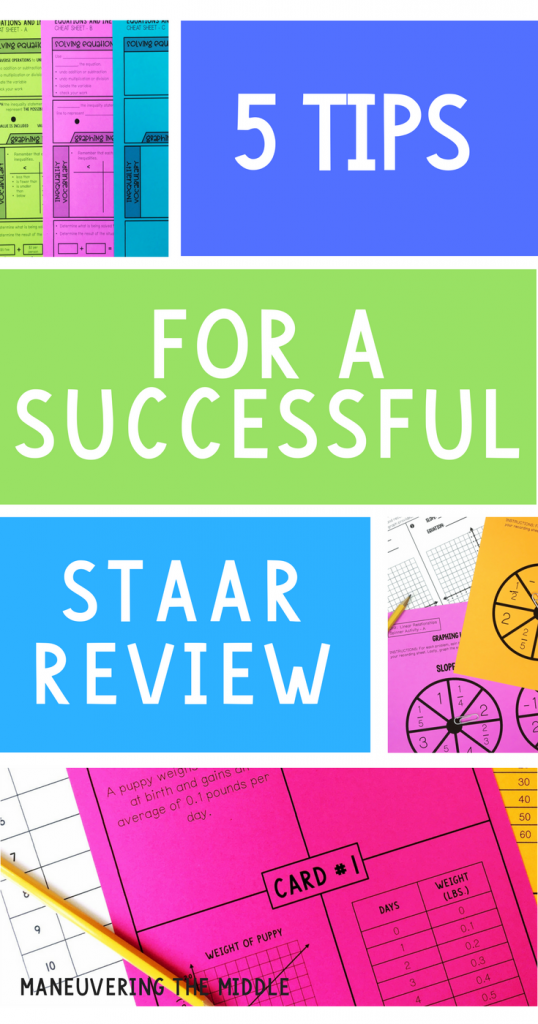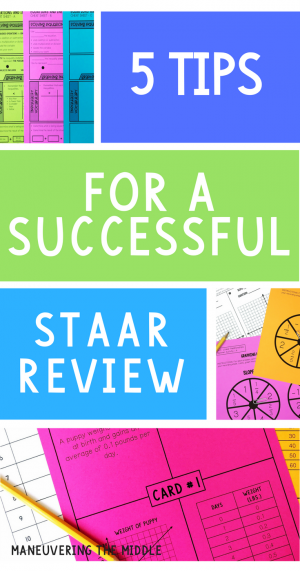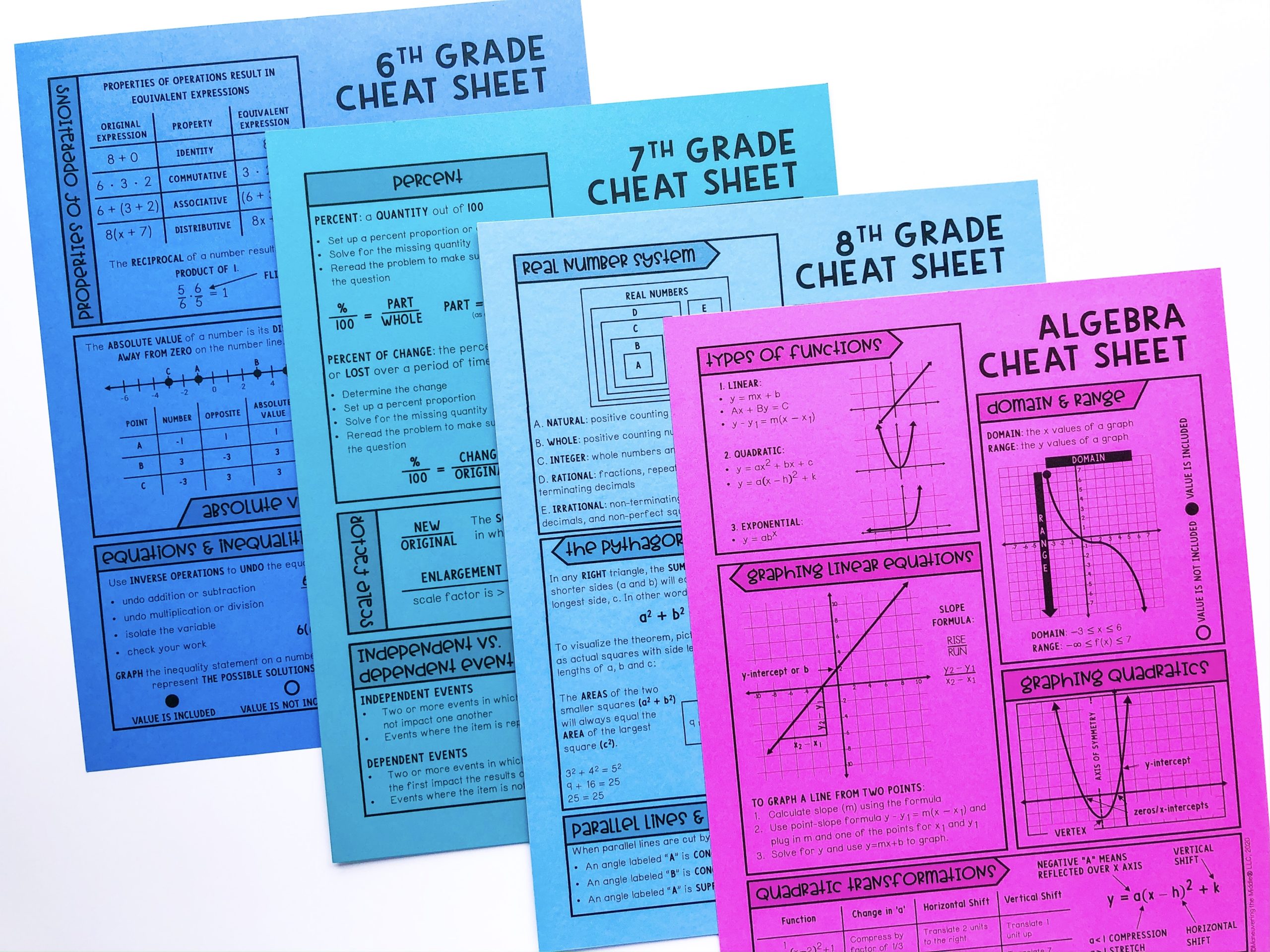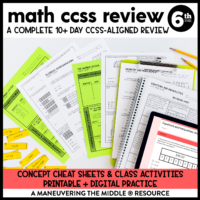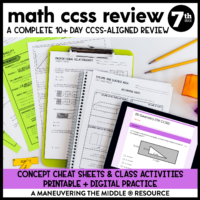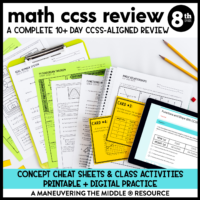Every year at this time, the pressure of the the spring, the lack of breaks, and then the lingering of the standardized test starts to set in. Here in Texas, students take the STAAR test in March, April, and May. Today, I wanted to share 6 STAAR review ideas to help get you geared up and to help prepare your students.
This is the last of three posts about test prep, so be sure to read about How to Make Test Prep Fun and Setting Goals to Keep Students Engaged.
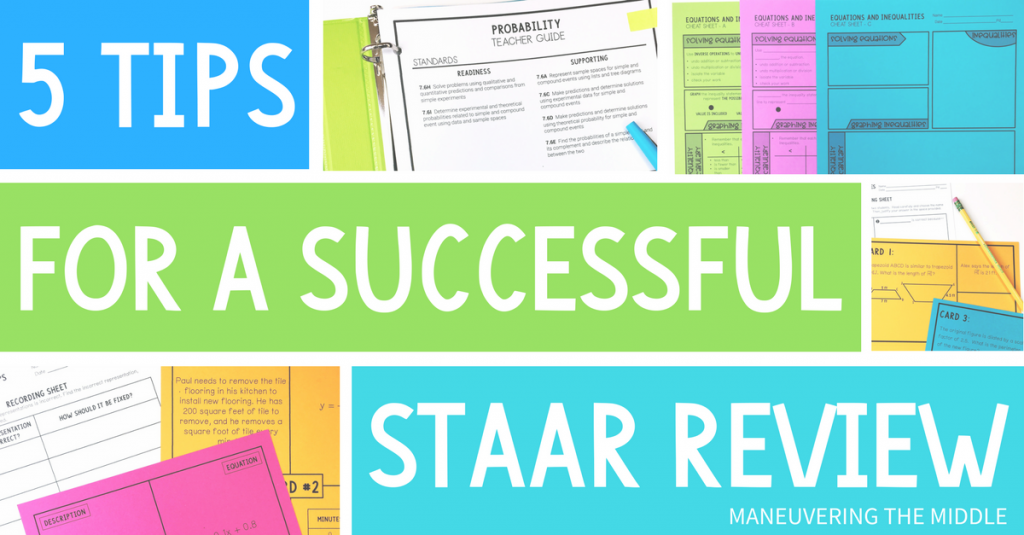 5 STAAR review ideas
5 STAAR review ideas
1. Emphasize the Readiness Standards
Time is limited and so is your students’ attention. Though it might be tempting to think that reviewing for a longer period of time is better, I would venture to guess that students lose interest and energy. I personally found a 10-day review to be just right.
Because time is limited, I would suggest focusing your time and energy on the readiness standards. On the middle school math STAAR tests, the readiness standards account for about two-thirds of the exam. So when planning, think about how you can allocate each of the 10 STAAR review days and organize like standards. For example, if you are going to focus on a readiness standard about similar figures, then it makes sense to include a supporting standard like scale factor.
2. Utilize Multiple Choice for Discussion
Most teachers try to incorporate multiple choice questions throughout their STAAR review so that students can practice test-taking strategies. Yay! I would encourage you to take it a little further and have students discuss the various answer choices and how one would come to that conclusion. It practices the higher-level thinking skill of error analysis, as well as lets students explain their thinking and see the problem in a new way.
I was able to do this by utilizing my e-instruction clicker technology and having students input their homework answers at the beginning of class. We would then quickly analyze any questions that caused students to struggle. If you don’t have a class set of clickers, socrative.com is perfect for gathering data from phones or iPads.
3. Mix It Up by Providing Variety
Students can easily check out during standardized test review, especially if they are reviewing in several other classes. When I taught eighth grade, we were reviewing simultaneously between all four content areas. So, anytime you can offer an activity with partners or groups, that is a win! Consider incorporating activities that get students up and moving, even if it’s just a few times a week.
4. Incorporate Small Groups
In my post about goal setting and organization, I mentioned that I would focus my small groups down to about 3-4 students per class period. I think this made the biggest difference because, for about 10 minutes a day, they were getting my undivided attention. I was able to question them through various strategies and encourage them to persevere and work through the problems. And finally, I was able to provide encouragement and build their confidence, which is what they really needed right before the test. I firmly believe this paid off and personally wouldn’t consider reviewing without small groups.
Sidenote/Soapbox: I know sometimes it is common practice within schools to have tutors come in and work with students or pull from their electives, etc, to give them more time and review. I would really encourage you to try and keep your own students, especially if they struggle. They have been with you all year and that relationship goes a long way.
5. Use Teamwork
Tyne shared her ideas about football frenzy and how to promote collaboration and teamwork throughout your STAAR review. I also like to just encourage and support teamwork with a talk at the beginning of the review period and a handful of incentives. I think it’s good to remind students that this is an opportunity to show all that they have learned. Most students put enough pressure on themselves, so they don’t need any additional pressure.
I hope these ideas give you a good starting place for organizing your review and thinking through not only the content but also the activities that will be incorporated.
If you are looking for a ready-to-go review of the TEKS, then you have come to the right place. I created a Complete 10+ Day Math TEKS Review for Grades 6-8. I took all of my past review experiences and things that I know are super helpful to have and put together a comprehensive review pack to take the prep off your hands.
-
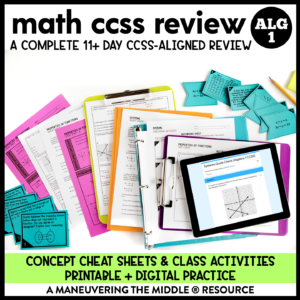 Algebra 1 Review and Test Prep CCSS
Algebra 1 Review and Test Prep CCSS -
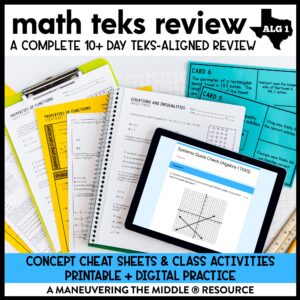 Algebra 1 Review and Test Prep TEKS
Algebra 1 Review and Test Prep TEKS -
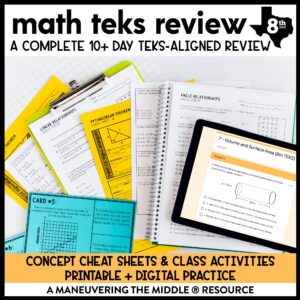 8th Grade Math Review and Test Prep TEKS
8th Grade Math Review and Test Prep TEKS -
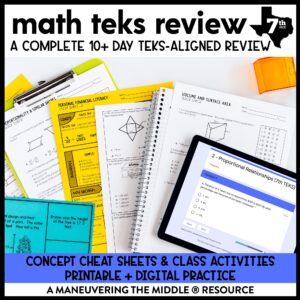 7th Grade Math Review and Test Prep TEKS
7th Grade Math Review and Test Prep TEKS -
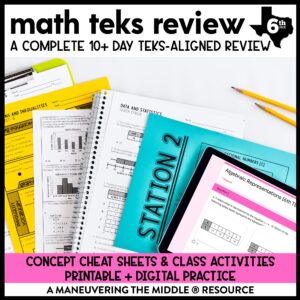 6th Grade Math Review and Test Prep Unit TEKS
6th Grade Math Review and Test Prep Unit TEKS -
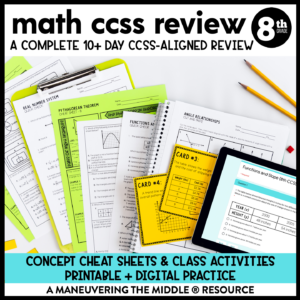 8th Grade Math Review and Test Prep Unit CCSS
8th Grade Math Review and Test Prep Unit CCSS -
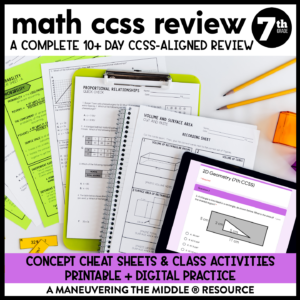 7th Grade Math Review and Test Prep CCSS
7th Grade Math Review and Test Prep CCSS -
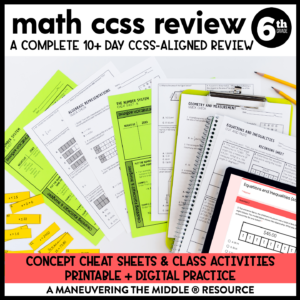 6th Grade Math Review and Test Prep Unit CCSS
6th Grade Math Review and Test Prep Unit CCSS
